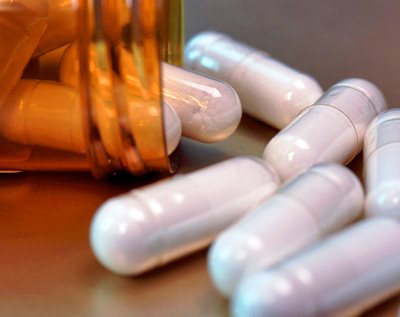

 With organisations across Europe backing today’s European Antibiotic Awareness Day (November 18, 2010), Chris Chapman reveals the key facts all pharmacists should know about the resistance threat to some of the most useful drugs in our arsenal.
With organisations across Europe backing today’s European Antibiotic Awareness Day (November 18, 2010), Chris Chapman reveals the key facts all pharmacists should know about the resistance threat to some of the most useful drugs in our arsenal.
1. Antibiotics resistance has always existed. Previously medicine was able to stay ahead of the curve because of the discovery of new classes of antimicrobials. However, this has now stopped. In addition, the World Health Organization (WHO) recognise several other factors – such as urbanisation, pollution, the aging population, AIDS and increased travel – as increasing the number of infections. This, in turn, results in increased antibiotics use – and misuse.
2. Resistance varies wildly between geographical location. For example, in 2007 the Health Protection Agency (HPA) reported an overall rate of non-susceptibility of streptococcus pneumoniae to penicillin of 3.8 per cent. However, this ranged from 1.1 per cent in Wales to 8.0 per cent in London. Some drugs have become almost ineffective: in 2007 the rate of resistance of group B streptococci to tetracycline was 82.7 per cent.
3. Serious conditions have also seen an increase in resistance. The incidence of drug-resistant tuberculosis has doubled since 2000, from 206 cases to 389 cases. In treating gonorrhoea, resistance to cefixime, the unlicensed first-line treatment, has increased from one in 1,000 cases to more than one in 10 since 2006.
4. The main driver of antibiotic resistance in the UK is inappropriate prescribing. According to Department of Health (DH) inspector of microbiology and infection control Brian Duerden: “Imprudent and misuse of antibiotics is one of the main factors driving both the increase in antibiotic resistance and the continued incidence of C. difficile infection in hospitals.” Key issues include not reviewing the use of broad spectrum antibiotics when microbiology results are available, and not including a stop date on antibiotic prescriptions, Professor Duerden adds.
5. Primary care accounts for 80-90 per cent of antibiotic prescribing, the majority for respiratory tract infections, and prescribing has increased 30 per cent since 2000. However, resistance is also a problem in hospitals: up to 50 per cent of all antibiotic use in hospitals in the UK is inappropriate.
6. In May, a meta-analysis on the effect of antibiotic prescribing was published by the BMJ. It looked at 24 studies and a variety of infection types, including urinary tract and respiratory infections. It found patients prescribed an antibiotic in primary care develop bacterial resistance to that antibiotic; the effect is greatest in the month following treatment, but may last for a year. A longer duration of course, or multiple courses, was found to be associated with higher rates of antibiotic resistance.
7. Antibiotic prescribing is complex, but one factor is patient expectations. However, patient satisfaction has been shown to be more reliant on effective communication than on receiving a prescription. In particular, patients should be advised on what to expect in the course of their illness, including the realistic recovery time.
8. Once an antibiotic has been prescribed, compliance is a major problem. Patients may stop taking a course of antibiotics once symptoms improve, which may not eliminate the pathogen, allowing resistance to develop. Therefore patients should always be advised to complete their course.
9. The WHO lists self-medication as another major concern. It warns self-medicated antimicrobials are often unnecessary and often dosed inadequately. In addition, counterfeit drugs may not contain adequate amounts of the active drug. Patients should be advised not to use antibiotics unless instructed to by a healthcare professional.
10. Last, there is one issue governing resistance pharmacists cannot impact. In Europe, the WHO estimates 50 per cent of all antimicrobials are used in food-producing animals and poultry as regular supplements – thus exposing large numbers of animals, regardless of health, to the drugs. This use has seen increased resistance to bacteria, such as Salmonella and Campylobacter, that can be spread through food and infect humans.
[SOURCE]
